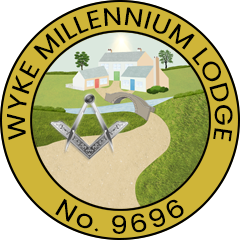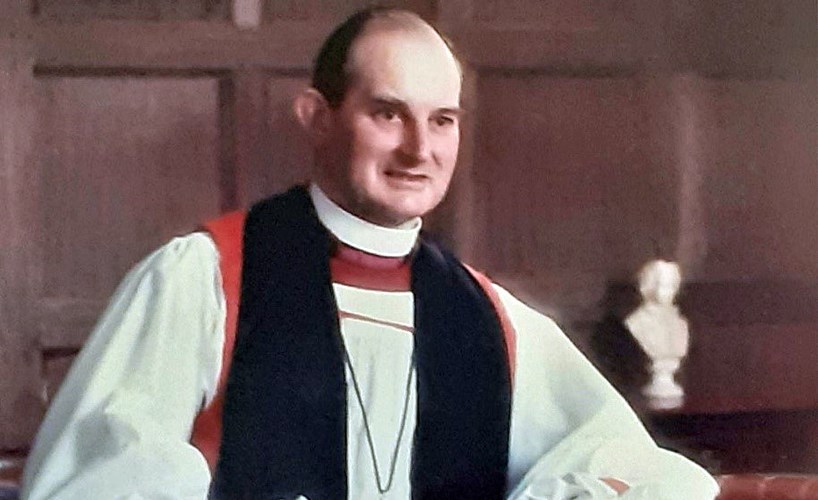Consecration of Wyke Millenium Lodge
The Address: Given By W. Bro. Rt. Revd David Galliford, PGChap.
WYKE MILLENNIUM, Put a question mark and it sounds like a cryptic clue in the Times crossword, especially if I say the answer is three words, three, three and three! Not to make a mystery of it the answer is Old and New. Whether intentional or not that is the message to me from the name of this new lodge.
It embraces the old and the new, Wyke Millennium.
For those who are not from Hull and district, or who like me have lived and worked in this area and have come to love it, the ancient name of Hull was Wyke, Wyke upon Hull – but you won’t find that in Domesday Book. It came to prominence about 1160 when the formidable Lady Matilda gave a grant of land to the monks of Melsa. Melsa or Meaux Abbey is close by where we are today, and in those days it was a small and impoverished community. That grant of land in the manor of Myton set them up because it was beside the river Hull where it joins the Humber. By the time of Edward 1st (1278) Wyke was important as a town and place of trade. The King looked upon it with a greedy eye, and in the way of monarchs he persuaded the monks to give up their inheritance for an annual income – a real mess of pottage. Once Wyke was in his possession he changed its name to Kingstown upon Hull (1293). So this lodge embraces a long history in its name. I think it is proper to record the generous thought of the Founders who wished to mark Hull’s 700th anniversary by incorporating Wyke in the name of their lodge.
Millennium, the other part of the name, conjures up for me a number of images. I think of that extravaganza on the bank of the Thames, costing a mere £755 million pounds, which has a projected life of one year. I find it personally difficult to enthuse about the Dome as a way of celebrating the new millennium. Much rather the Wyke Millennium Lodge which will celebrate it in perpetuity. Then there is the Ferris wheel which in my book is the wheel which goes nowhere, for all the fuss that has been made about it.
I am reminded of Winston Churchill, in his “History of the English Speaking Peoples”, who describes the beginning of the present millennium as the wheel of progress. It turned very slowly at first after the Viking occupation, but it ushered in the monastic revival with its encouragement to sound learning, and the age of great buildings. After the middle ages it picked up speed and brought in the great period of the renaissance. That wheel continued to turn, accelerating in our own time to things which not even Churchill dreamed of – a man on the moon, a probe to the red planet, and the exploration of outer space. What will this new millennium bring? Who can tell what discoveries will be made? It is all very exciting – but let us take care lest the epitaph over our civilisation should say “They knew everything, but they learned nothing.”
So brethren Wyke Millennium, embracing the old and the new, what does it say to us and the future of this lodge? In regard to the old it says we should cherish our masonic landmarks and enhance their importance. In particular we should mark the fact that the three great lights of Masonry, the Volume of the Sacred Law, the Square, and the Compasses, are bedded deep in masonic history. That is not to say they should be taken for granted. They remind us of those verities, those virtues, those qualities, which not only undergird masonic practice, but also undergird civilised society.
In an age when anything goes, when people are in a muddle about morality and there seem to be fewer fixed points for human behaviour, I believe that lodges and individual masons have much to offer. Masonry sets great store by goodness and wholeness and integrity. Our masonic landmarks give the lie to our detractors. All our ceremonies have a high moral content. All that goes on in the Lodge, whether during a ceremony or at the festive board, encourages a wholesome lifestyle. That is something to hold to and to cherish. We should be proud of our tradition and nourish it.
If we are bold about the old then we must be bold too about the new. The wheel of progress is turning and encouraging us to be more open about our Order. In the past we have kept things to ourselves. We have not been very good at PR. Perhaps we have been rather chary of talking about freemasonry outside masonic circles because we have not known what to say. Now that can change. We have all been given two booklets published by United Grand Lodge – one called “Freemasonry: An Approach to Life”, and the other “Your Questions Answered”. We should know those books backwards from cover to cover. You may be a mason of many years standing, but I would encourage you not to assume that you know it all anyway. Pride in our masonry needs to be balanced with a certain humility – the humility which says however long I have been a mason, there is still much to learn, and not least how I put across the meaning of masonry to others.
Brethren, as individuals be bold in this new open approach. Be bold too as a Lodge in this matter of openness. Masonry didn’t begin in dedicated masonic halls, it was earthed in community life, as today we meet in these public surroundings. It’s a matter of putting our heads together to find new ways of using venues like this for commending masonry to those outside it. There are no blueprints. but we have among our members those with the necessary gifts and skills to do this. Let us encourage them to bring forward their ideas.
Wyke Millennium – the old and the new. And may the Great Architect give you the courage to change those things that can be changed, to preserve and cherish the things which can’t he changed and, above all, wisdom to know the difference.
This information is sourced from The Provincial Grand Lodge Year Book 2000

